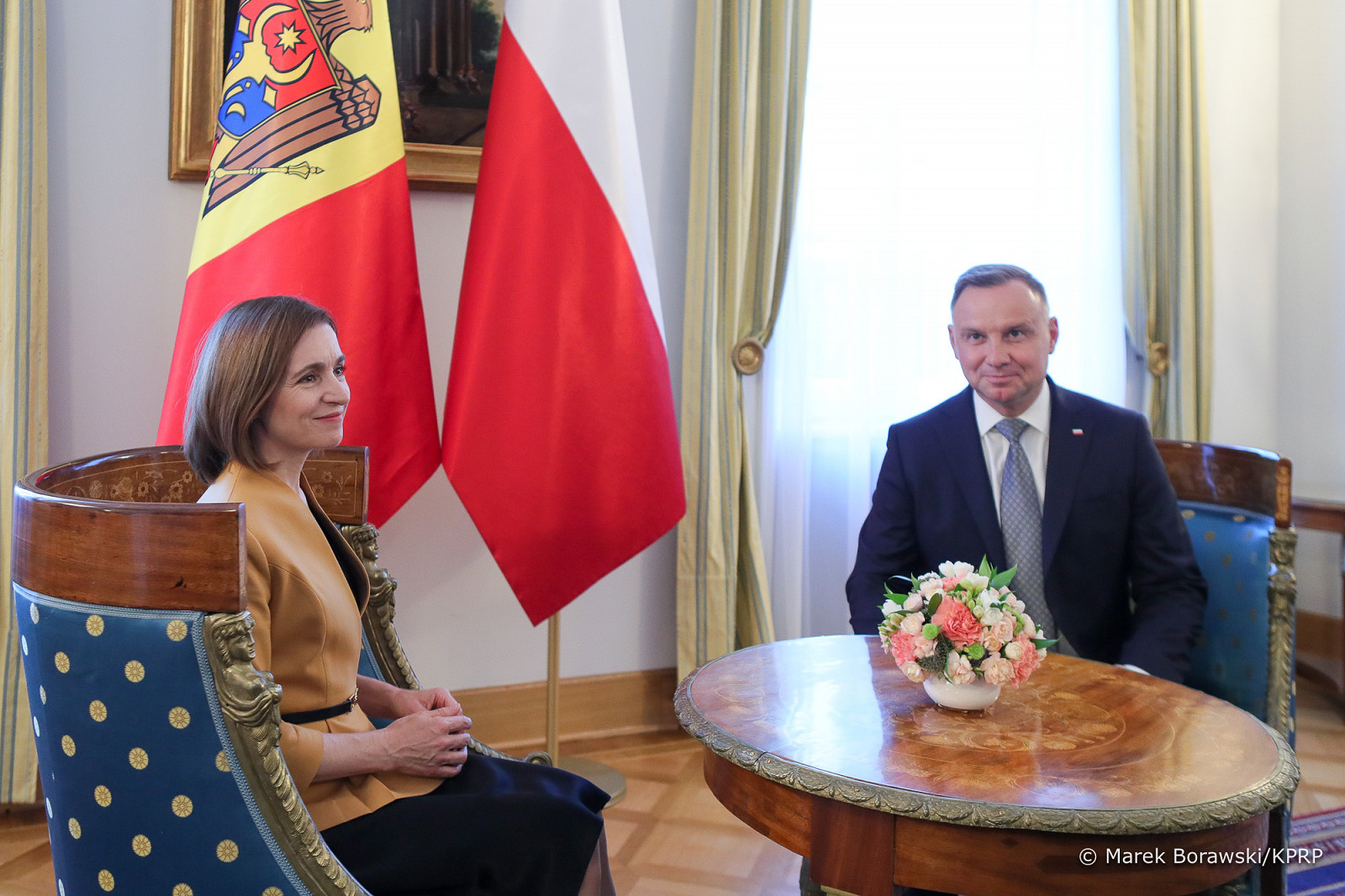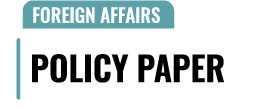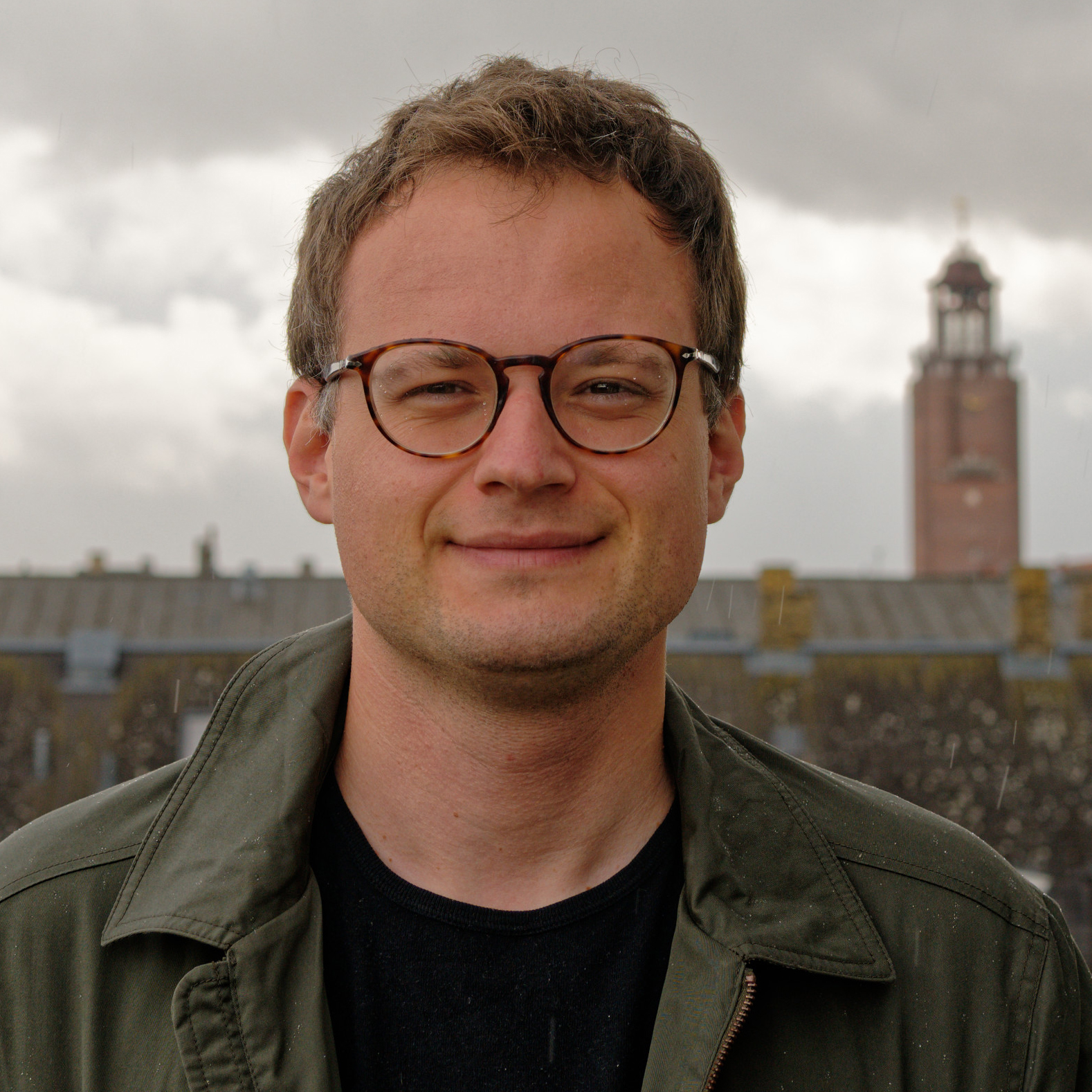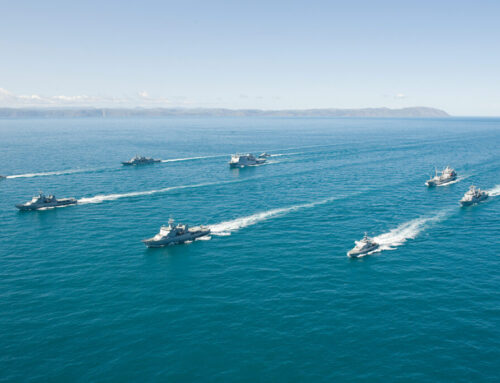11__Andrzej_Duda_Maia_Sandu_Prezydent_Moldawii_20220714_MB2_9683
Autor foto: Domena publiczna



11__Andrzej_Duda_Maia_Sandu_Prezydent_Moldawii_20220714_MB2_9683
Autor foto: Domena publiczna
Central and Eastern Europe’s Balancing Act
Autor: Miłosz J. Cordes
Opublikowano: 19 maja, 2023
Pulaski Policy Paper no 23, May 19, 2023
Central and Eastern Europe (CEE) needs to become an attentive listener if its countries want to advocate for its interests more effectively. With the war in Ukraine ongoing and the challenge of the country’s reconstruction looming on the horizon, the regional decision-makers have to show more understanding of the challenges faced by their partners in other parts of the continent. They also need to embark on the path to resolve bilateral disputes with the EU institutions and major EU Member States to increase the region’s credibility at international level in the times of changing global security landscape.
Introduction
As the preparations for the 2023 Warsaw Security Forum are gaining speed, so are the discussions within the Forum’s high-level working groups. The main question we are facing is the position of Central and Eastern Europe in the rapidly changing European and global security environment. How can it cement its cohesion and live up to the role of the new centre of gravity.
Obviously, this task requires a tremendous amount of work to be done at broader international, regional, and domestic levels. This paper, seeks to define some basic objectives and challenges. It reflects not on how Central and Eastern Europe views the current security landscape, but rather on what it can do foreign policy-wise to better advocate for its interests while talking to its transatlantic partners. It matters because the Russian invasion of Ukraine has shown the merit of cooperation and cohesive approach in both hard (NATO) and soft security (the European Union, the collective West as a community of values) terms.
Only coordinated efforts and unity have allowed the West to sustain a steady flow of support for Kyiv, both now when the war is ongoing and later on when reconstruction efforts begin. Already today one major advocacy cause emerges: Ukraine needs to gain a clear integration perspective with all major Western institutions. It can only happen if the definition of Central and Eastern Europe, understood as a part of the collective West, gets widened and starts encompassing Ukraine.
This is where we have seen considerable cracks forming even before launching any broader geopolitical discussion on the future of the region. Hungary has been blocking more ambitious sanctions, limiting the transit of weapons, and making ambiguous comments over the Transcarpathian region of Ukraine[1]. In Poland, as political tension is rising in the run-up to the October general election, the sharp decrease of grain prices due to grain influx from Ukraine has encouraged some politicians to play this card at the potential risk of harming the united front against Russia. On top of that, due to high transportation costs, the Russian wheat is currently the cheapest in the world[2], which makes it very attractive to many countries, most of all in North Africa.
Central and Eastern Europe is not free from the disturbing existence of pro-Russian views. According to the survey carried out by GLOBSEC, 37% of Slovaks see Moscow as Bratislava’s strategic partner. While 22% of respondents in Romania believe that Russia had the right to invade Ukraine[3].
The more such cracks appear, the higher the risk of weakening the region’s stand in a growing number of issues will get. Central and Eastern Europe will find it increasingly difficult to alter the way in which it is perceived in other parts of the collective West. Naturally, the latter pursue their own interests and follow their reading of the situation. It impacts their readiness to tune in to what Central and Eastern European countries have to say. Apart from the above-mentioned cracks, it is the second most important factor in the game for Central and Eastern Europe’s strategic well-being: its worryingly low ability to listen.
Selfishness requires empathy
In the light of 15 months of a full-scale war in Ukraine, it feels natural to focus on this obvious direct security threat. Yet in the last 10 years, other parts of Europe have experienced numerous severe crises, some of which have never been overcome. They continue to impact many EU and NATO member states and their societies.
The refugee/migrant crisis, for instance, has taken different forms, affecting the south and the east of the Mediterranean. Today, although the civil war in Syria or unrest in Libya are far from their most intense phases, there is still a high degree of volatility across North Africa and the Middle East. Other areas too have the potential of becoming large-scale humanitarian catastrophes. Lebanon, for instance, has been on a slippery slope for a long time now. The difficult food supply situation, partly due to the war in Ukraine, can push Egypt to the brink of serious social protests at any time. Slow economic growth caused by the COVID-19 pandemic has made millions of people in Africa and the Middle East grow tired of their quality of life, thus more desperate to search for ways to change it quickly.
As much as these developments are likely to have little direct impact on Central and Eastern Europe, they will heavily affect France or Italy, and, as traditional end destination countries, Belgium, Germany, and the Netherlands. Tackling them requires a common European migration policy – something that has never been adopted also because of scepticism presented by CEE politicians and societies.
The inability to positively respond to the concerns of West and South European nations makes it all the more difficult for CEE to convey messages that are important for the region: the proximity of the Russo-Ukrainian war or the destructive potential of Kremlin’s disinformation activities and hybrid warfare. These challenges can only be addressed by the European Union and other institutions of the collective West as a whole. Unless Warsaw, Budapest or Bratislava show the same degree of understanding for Paris’, Rome’s or Athens’ concerns, unity and cohesion will be the first victims of the inability to act together.
The transatlantic angle
Because of the Russian invasion of Ukraine, the United States has shifted their short-term security focus to Europe. Many European politicians breathed a sigh of relief as they had been increasingly disturbed by the strategic pivot to Asia, initiated by the Obama administration. Now Washington is again deep in European security, sending military support there on a scale unseen since the end of the Cold War.
One might wonder, however, if this policy is sustainable in the long run. The U.S. turned its eyes to Europe only when there was no other possibility but to contain Russia with unprecedentedly strong means. It does not mean that Washington’s strategic interest in China and East Asia has disappeared. On the contrary, the developments around Ukraine have shown that Beijing’s stance is of paramount importance globally as it decreases the effect of sanctions on the Kremlin. It also points to a number of challenges elsewhere, such as the future of Taiwan, about which the Chinese government has a lot to say, and the balance of power in East Asia.
For these reasons, the U.S. has to shift their long-term attention to Asia at some point in time. That means that the relative importance of Central (and Eastern Europe) on the global security chessboard is likely to decrease without taking additional measures. These measures could include making sure that at least some American troops would remain in the region to strengthen NATO’s eastern flank.
Central and Eastern European governments could also work towards greater cooperation with its Western and Northern European NATO allies. This, however, brings us again to the question of listening to the others’ needs. That would entail greater contribution to EU defence initiatives. It is sometimes challenging for Warsaw, Vilnius, or Prague to imagine them developing parallelly without the risk of weakening the NATO component. Nevertheless, recent events have shown it needs to happen should the region want to build new protective measures against threats stemming from the East.
The EU angle
Streamlining policies at the EU level requires far-reaching political coordination. Discussions between 27 countries have never been painless. All crucial decisions will inevitably be subject to tough negotiations. In times of ground-breaking ruptures, however, efforts must not be wasted on disputes that can be resolved. There are a number of open fronts that have to be closed if CEE wants its voice to be heard more in Brussels. Some of them even pertain to intra-regional relations, such as the Turów powerplant and environment pollution on the Polish-Czech border[4]. They can and they should be brought to an end swiftly.
The regional cohesion of Central and Eastern Europe is badly needed to increase the region’s standing in Brussels. Cohesion at the EU level can be achieved through cross-regional actions. There is a previously unseen window of opportunity to increase cooperation with the Nordic countries. With Denmark having revoked its EU defence cooperation opt-out clause, Finland having just joined NATO and Sweden being very close to doing the same, the Nordics are eager to drop parts of their isolationist approach to profit from more cross-regional initiatives.
Although they are still unlikely to join the pan-European integration mainstream, they start to realise their relatively small potential in resisting the growing Russian threat in the Baltic Sea Region and in the Arctic. One should thus ask oneself if a quasi-ideological crusade against non-heterosexual minorities or women rights, observed in many CEE countries, is a sensible choice from the point of view of the region’s long-term security interests.
Concerns over cross-regional cohesion become even greater when the moment for rebuilding Ukraine arrives. CEE will be at the forefront of these efforts and will be the closest possible donor of political, economic, and societal transition expertise. At the same time, it does not possess enough financial means to initiate and sustain the reconstruction efforts. It needs to be a coordinated effort of the whole collective West, which will have absolutely no guarantee for success due to the scope of challenges related to Ukraine’s devastated economy, demographic crisis, and endemic corruption.
Central and Eastern European regional cooperation formats, such as the Visegrad Group and Three Seas Initiative, also come in handy, provided that they are reinforced by the EU and NATO. While the former would be at the forefront of securing expertise and logistics, the latter will facilitate communication, coordination, and a basic level of defence. Yet without quenching the fires that broke out in numerous areas related to identity politics, as well as democratic checks and balances, there can be no effective advocacy for understanding Central and Eastern Europe’s interests in other parts of the continent.
In all its efforts to defend Ukraine’s independence, the West must not forget about its other partners in the post-Soviet area, most notably Georgia and Moldova. Although they have undergone a long and bumpy road to root out corruption and other structural deficiencies in their political systems, they need to continue their efforts to avoid falling into the abyss of Russian influence. In addition, it cannot be ruled out that when the invasion of Ukraine finally fails, the Kremlin will turn its eyes to the smaller nations in the area and will launch a local operation to gain the support of the Russian public, especially that Chisinau and Tbilisi still face obstacles in building resilience[5].
CEE countries cannot stand idle in the view of such risks. Yet their acting capabilities will again be greatly limited without counting on their partners. Ensuring a unified and determined front against Moscow’s shenanigans is only possible when the region is able to tune in to its Western allies’ specific situation and be ready to respond to them in a constructive manner. Moscow will continue scouting for dents in the EU and NATO wall, trying to play different interests at the bilateral level. Cohesive multilateral response is the best form of defence in this regard.
Conclusion
- The history of European and transatlantic integration shows that, while the immediate threat was needed to initiate new cooperation initiatives, it was the spirit of compromise that allowed them to develop and thrive. Members of the European Communities, before turning them into the European Union and opening their doors to an unprecedented number of countries, needed to learn how to listen and how to be listened to. Although it was a bumpy road, it was badly needed.
- This experience is now applicable to the specific situation of Central and Eastern Europe from Tallinn to Sofia. With Ukraine opposing the unprecedented Russian invasion, the region once again needs to become the avantgarde of integration efforts by pursuing responsible, common good-oriented policies. Decision-makers in Warsaw, Riga or Budapest need to remember that united Europe’s security and well-being starts in Lisbon and Dublin and goes all the way to Athens and Helsinki. Only this way there can be hope for the European and the transatlantic integration projects to expand.
Author: Dr Miłosz J. CORDES is the Lead Analyst of the Foreign Policy working group. Its work will be incorporated into the “2023 Warsaw Security Forum Annual Report”, as well as reflected in the programming of the conference. The group chairs and experts will have an opportunity to present the work findings at the conference scheduled for 3-4 October 2023.
Supported by a grant from the Open Society Initiative for Europe within the Open Society Foundations

[1] Olha Lyshen, Transcarpathia stops Hungary from approving closer Ukraine-NATO cooperation, source: https://www.euractiv.com/section/global-europe/news/transcarpathia-stops-hungary-from-approving-closer-ukraine-nato-cooperation/
[2] DG AGRI Dashboard: Cereals, source: https://agridata.ec.europa.eu/Reports/Cereals_Dashboard.pdf
[3] GLOBSEC Trends 2022: CEE amid the war in Ukraine, source: https://www.globsec.org/sites/default/files/2022-05/GLOBSEC-Trends-2022.pdf, p. 11.
[4] Order of the Vice-President of the Court in Case C-121/21 R Czech Republic v Poland, source: https://curia.europa.eu/jcms/upload/docs/application/pdf/2021-05/cp210089en.pdf
[5] Dumitru Minzarari, Population-centric: Lessons from Russia’s hybrid war in Moldova, source: https://ecfr.eu/article/population-centric-lessons-from-russias-hybrid-war-in-moldova/; Therese Raphael, Georgia Is a New Front in Russia’s Hybrid War, source: https://www.washingtonpost.com/business/2023/03/09/georgia-is-a-new-front-in-vladimir-putin-s-hybrid-war/44888f6c-be61-11ed-9350-7c5fccd598ad_story.html






